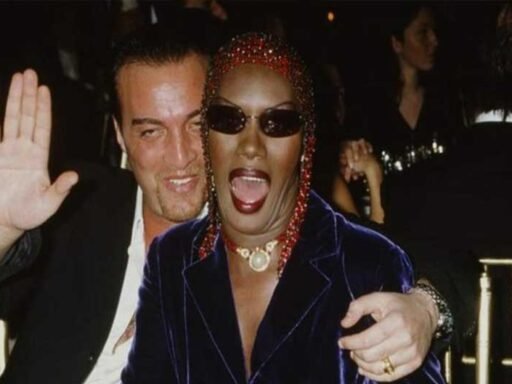An unsuccessful draft pick in sports is often seen as a significant setback, characterized by a player’s inability to meet the team’s expectations due to underperformance or poor team integration. This situation not only affects the individual’s career but also impacts the team’s overall performance and morale.
Understanding what is an unsuccessful draft pick involves delving into the common causes that lead to such outcomes and exploring strategies for resilience and growth. This comprehensive guide will present insights into mitigating risks associated with drafting and highlight case studies of notable unsuccessful draft picks, shedding light on the path to overcoming these challenges.
Identifying the Common Causes of Unsuccessful Draft Picks
Physical and Environmental Challenges
- Physical Mismatch: Often, athletes who are stars in college sports find the professional leagues challenging due to differences in physical demands. The intensity and competitiveness at the professional level require not just skill but also physical attributes that may surpass what was sufficient in amateur sports.
- Change in Surroundings: Transitioning from a supported college environment to a professional setting can be tough. In professional sports, the robust support system—comprising high-level teammates and experienced coaches—that once masked an athlete’s deficiencies might no longer be available.
- Lack of Adaptation: Adapting to the faster pace and higher skill level of professional leagues is a significant hurdle. Many athletes struggle to adjust to these heightened demands, impacting their performance and career longevity.
Psychological and Tactical Factors
- Personality and Work Ethic Changes: Post-draft, some athletes experience detrimental changes in their personality or motivation due to sudden fame and fortune. This shift can lead to complacency, affecting their performance and career development.
- Lack of Fit with Team Strategy: A misalignment between an athlete’s skills and the team’s playing style, culture, or coaching approach can hinder an athlete’s ability to succeed, regardless of their talent.
- Mental and Emotional Challenges: The mental and emotional pressures of professional sports can overwhelm young athletes. Without adequate support to navigate these stresses, their performance can suffer.
External Influences and Health Concerns
- Injuries: Both immediate physical injuries and long-term health issues can drastically alter an athlete’s career trajectory. Teams must conduct thorough medical evaluations to assess risks effectively.
- Financial and Off-Field Issues: Poor financial management and off-field distractions, including substance abuse, can adversely affect an athlete’s focus and career. Additionally, external pressures such as changes in coaching staff or organizational dysfunction can further complicate an athlete’s professional journey.
- Overestimation of Talent: Sometimes, scouts and teams might overestimate a player’s potential, leading to draft picks that do not perform as expected at the professional level. This misjudgment can result from relying too heavily on past performance metrics without considering how well skills translate to a higher level of play.
The Impact of Unsuccessful Draft Picks on Teams and Athletes
Unsuccessful draft picks, often referred to as draft busts, can significantly impact the financial stability and performance of sports teams. High-profile busts such as Ryan Leaf and JaMarcus Russell illustrate the severe consequences of misjudged draft selections. These athletes, despite their potential, failed to meet the expectations at the professional level, leading to substantial financial losses. Teams invest millions in salaries and bonuses, expecting these players to be pivotal in their strategies, only to face setbacks when the athletes underperform.
The repercussions extend beyond financial aspects. Draft busts can tie up resources, hindering a team’s ability to build a competitive roster. This misallocation is particularly damaging as it prevents teams from signing potentially more impactful players. The presence of underperforming players due to poor draft decisions can also lead to a negative spiral in team morale. Behavioral issues and lackluster performances contribute to an environment where motivation and teamwork deteriorate, impacting even the most skilled players on the roster.
Moreover, the effects of unsuccessful draft picks resonate with the fan base and influence external entities like betting markets. Fans expect a commitment to excellence and competitive play; however, when teams appear to be ‘tanking’—losing games to obtain higher draft picks in subsequent seasons—it can disillusion the fan base and tarnish the team’s reputation. Additionally, the unpredictability introduced by tanking affects betting markets, occasionally prompting interventions by betting houses to mitigate skewed betting behaviors influenced by perceived team strategies.
Strategies to Mitigate the Risks of Drafting Unsuccessfully
Refining Scouting Methods
To reduce the risk of unsuccessful draft picks, teams are encouraged to refine their scouting methods. This involves enhancing the evaluation processes to ensure a comprehensive analysis of a player’s skills, performance history, and potential for growth. Advanced analytics and data-driven approaches can provide deeper insights, helping scouts to make informed decisions based on more than just past performance metrics.
Emphasizing Character and Work Ethic
Investing in players who not only have the skills but also demonstrate strong character and work ethic is crucial. These attributes often predict how well a player will adapt to professional pressures and the demanding environment of top-tier sports. Teams that prioritize these qualities in their draft picks tend to experience better long-term success with their selections.
Comprehensive Player Development Programs
Implementing comprehensive player development programs is another effective strategy. These programs support young athletes in their transition to professional levels, focusing on physical, mental, and tactical training. By investing in the holistic development of players, teams can enhance the likelihood of each draft pick reaching their full potential, thereby mitigating the risks associated with drafting.
Case Studies of Notable Unsuccessful Draft Picks
High-Profile Failures in Sports Drafting
NFL Draft Disappointments
- JaMarcus Russell, QB, Oakland Raiders (2007, No. 1 Overall):
- Struggled with work ethic and conditioning.
- Failed to translate collegiate success to the NFL.
- Ryan Leaf, QB, San Diego Chargers (1998, No. 2 Overall):
- Issues with performance, behavior, and injuries.
- Considered one of the biggest busts in NFL history.
- Tony Mandarich, OL, Green Bay Packers (1989, No. 2 Overall):
- Hyped as “the best offensive line prospect ever.”
- Failed due to poor performance and substance abuse issues.
NBA Draft Letdowns
- Greg Oden, C, Portland Trail Blazers (2007, No. 1 Overall):
- Career plagued by knee injuries.
- Played only 105 games over five seasons.
- Sam Bowie, C, Portland Trail Blazers (1984, No. 2 Overall):
- Selected before Michael Jordan.
- Career hampered by injuries, failing to meet expectations.
- Michael Olowokandi, C, Los Angeles Clippers (1998, No. 1 Overall):
- Struggled with consistency and injuries.
- Did not live up to the expectations of a first pick.
MLB Draft Missteps
- Brien Taylor, P, New York Yankees (1991, No. 1 Overall):
- Never played in the MLB due to a shoulder injury from a fight.
- Steve Chilcott, C, New York Mets (1966, No. 1 Overall):
- Only No. 1 overall pick never to play in the MLB.
- David Clyde, P, Texas Rangers (1973, No. 1 Overall):
- Rushed to the majors, struggled with effectiveness and injuries.
These cases illustrate the unpredictable nature of sports drafting, where high expectations often lead to notable disappointments, affecting both the players’ careers and the teams’ futures.
FAQs
1. What is the significance of a draft pick in the NFL? Draft picks are crucial in the NFL as they allow teams to replenish and enhance their rosters annually. These picks can significantly impact a team’s performance, with some players immediately contributing to their new teams, while others may not meet expectations.
2. Can you explain the difference between protected and unprotected draft picks? In scenarios involving trades, if a draft pick is protected (for example, top 5 protected), the original team retains the pick if it falls within the protected range. If the pick is unprotected, regardless of its position, the team that acquired it through trade owns it completely.
3. How is the order of draft picks determined in the NFL? The NFL draft order is set each year based on the teams’ performance in the previous season. Each of the 32 teams receives one pick per round over seven rounds. The team with the worst record gets the first pick in each round, while the Super Bowl champions pick last, unless there are trades affecting the order.
4. What does it mean to have the first draft pick in the NBA? In the NBA, the first draft pick refers to the player chosen first in the league’s annual draft. This pick is typically awarded to the team that wins the NBA draft lottery, which usually involves teams that had a poor performance in the preceding season.





